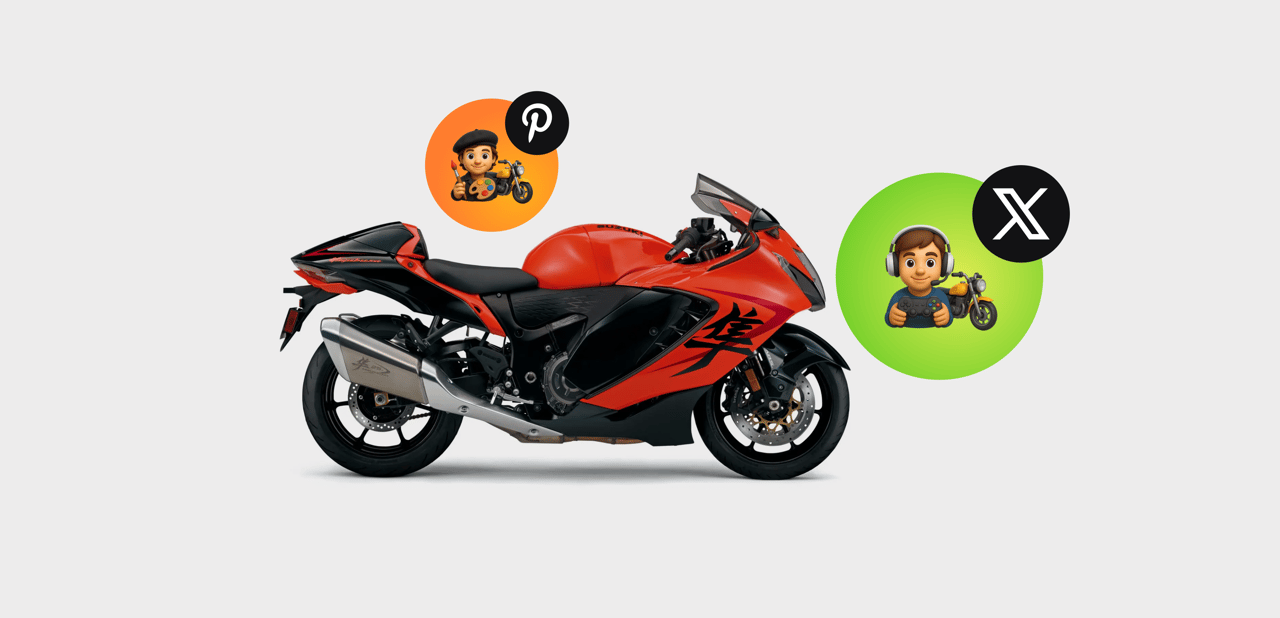Social media analytics: how to get the most out of it?
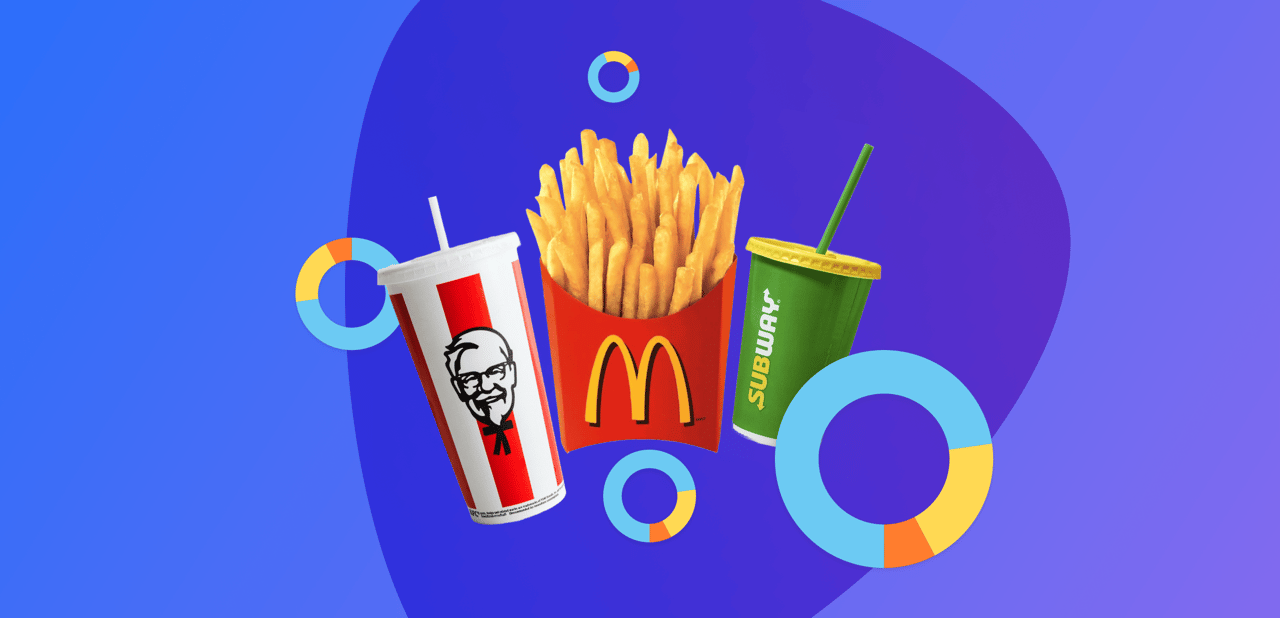
Which marketing strategy works best? How do you track your brand performance in real-time? What level of loyalty do customers feel towards your brand? Social media analytics is one of the best ways to get answers to these questions and to get the full picture of perceptions of your brand.
What is social media analytics?
Social media analytics is the collection and processing of social media data in order to measure the performance of marketing, analyze client experiences, and improve your product or service. Every wise business decision should be based on sufficient, quality data, and social media is a reliable source for this – especially when it comes to customer and market-related insights.
Social media analytics use cases
Social media data can cover lots of tasks, but here are the main use cases:
Uncover new trends relevant to your brand
Understand the sentiment around your brand and track all changes in it, revealing strong and weak sides
Organize reputation management
Each case requires its own metrics and real-time tracking which thankfully is easy to organize and maintain with the right tools and platforms.
Social media analytics reporting and key metrics
There are many social media analytics metrics that you could track based on your goals and strategy. However, you should focus on the most essential that are relevant for all businesses and fields.
1. Share of Voice.
This metric is one of the most important for any brand. Share of Voice gives a clear picture of your brand’s place in the market compared to other players. Let’s look at an example. It’s not a secret that McDonald’s is the most widely discussed fast food chain in the world. However, we can look at Subway and KFC compared to it. According to social listening analytics made with YouScan, KFC has twice as few mentions as Subway.
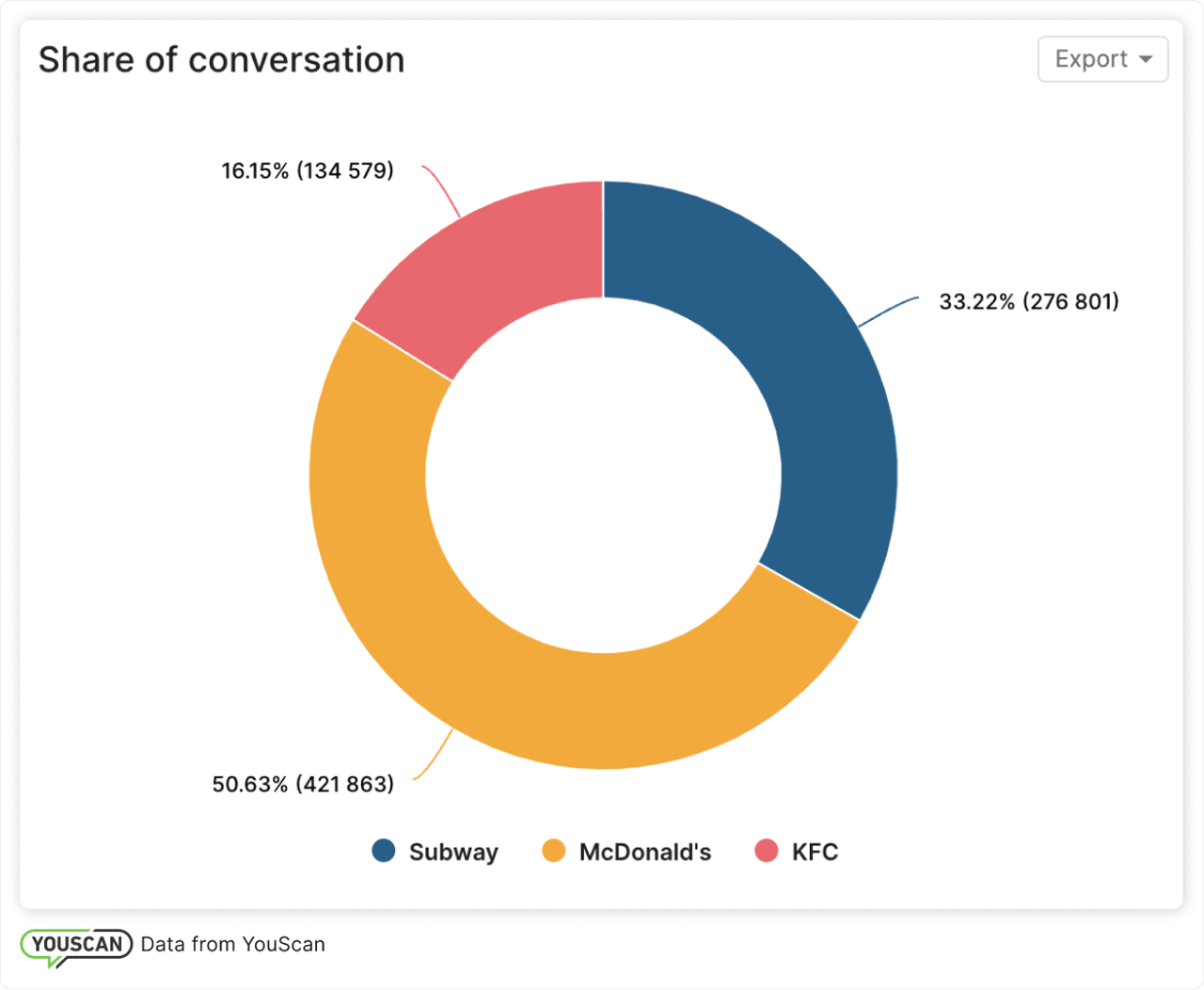

2. WOM-mentions
For every brand, it is important to separate adverts, giveaways, promo posts, and brand collaborations from real user discussions. Word-of-Mouth mentions show the real quantity of genuine customer engagement and indicates the real level of interest of an audience for a certain product, topic,or brand. For instance, a beauty product such as as Brow Gel has a very small number of WOM mentions compared to mentions of the product in promos and adverts. The same goes for Sephora’s brand mentions.
On the other hand, the watchmaker Casio’s mention distribution is different. The brand has a significantly higher number of WOM posts which shows interest towards it.
However, this high WOD may have been caused by the recent crisis communication incident when Shakira compared a Casio watch with the new girlfriend of her ex-husband, trying to imply that the brand was cheap and not worth any attention.
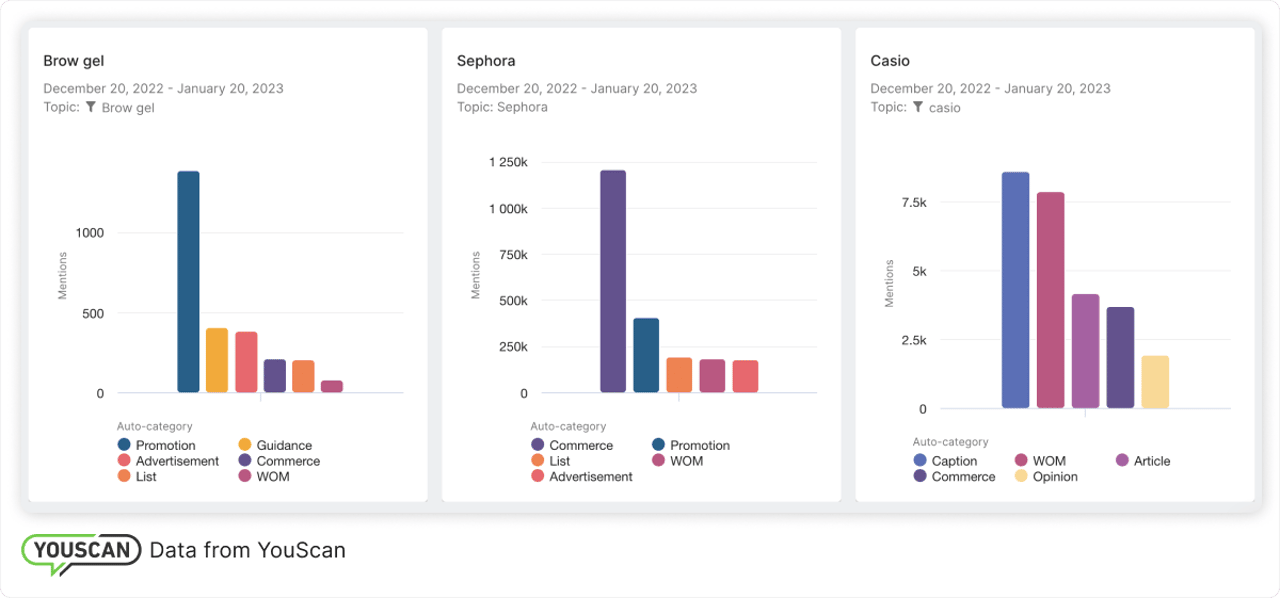

3. NSR
Apart from tracking the number of mentions, it is important to analyze the content and understand what exactly customers think about your product or service and how their attitudes cchange ver time. To make this possible, your social media analytics strategy should include metrics such as Net Sentiment Rate (NSR).
With NSR, you can track on a regular basis which type of mentions prevails – positive or negative. Basically, it is a ratio between positive and negative mentions over a certain period of time. A positive score is above 0, negative below 0.
The picture below shows a drop in the Net Sentiment Rate of Lenovo in December 2022 compared to November. It signals reputational concerns and with more detailed social network analytics, its team can investigate the reasons for users’ complaints.
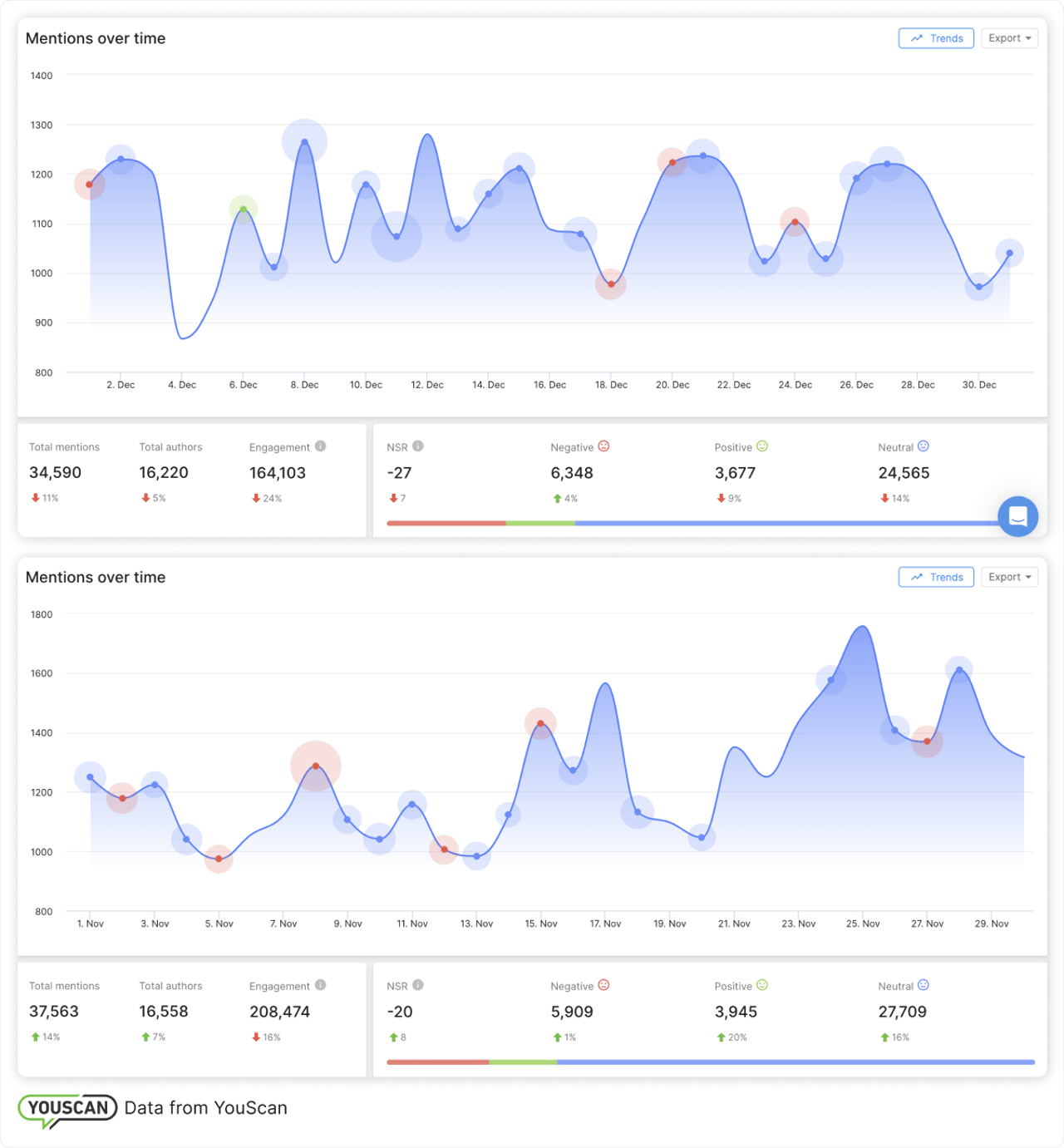

4. Social listening channels distribution
Every brand has its own top sources where their services and products are predominantly discussed. This data is useful to use for knowing where to prioritise brand representation in social media. The best way to track it is social media analytics. With social listening tools, with just a few clicks you can get this data.
Below you can see the top sources of mentions for FedEx. Surprisingly, users mainly discuss the transport company in Telegram channels and on Pinterest.
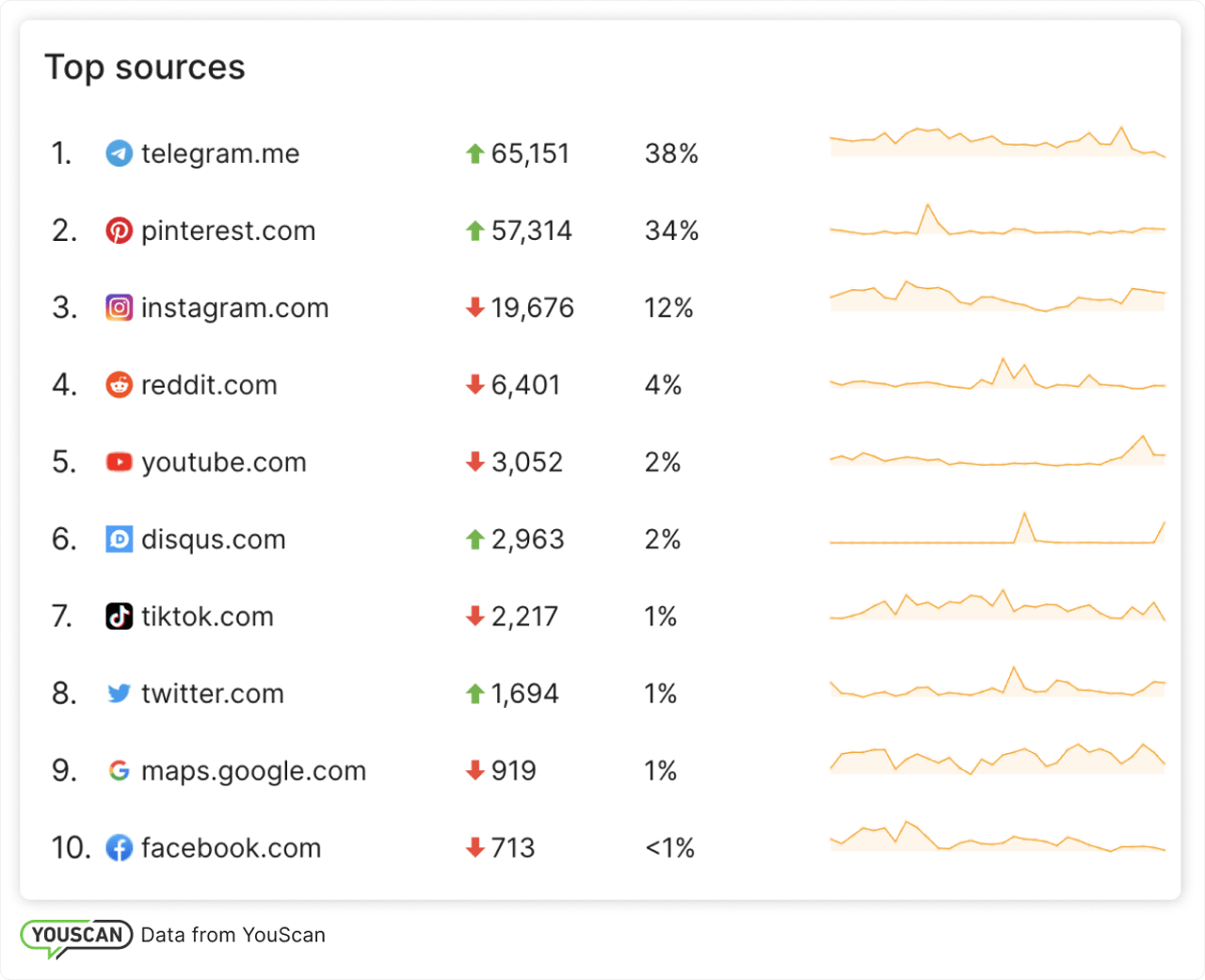

Social media analytics dashboard
Once a brand has determined its essential metrics, it is important to track them on a regular basis. However, calculating and visualizing numbers can be time-consuming. To manage this task, brands are able to use customizable dashboards provided by social analytics platforms.
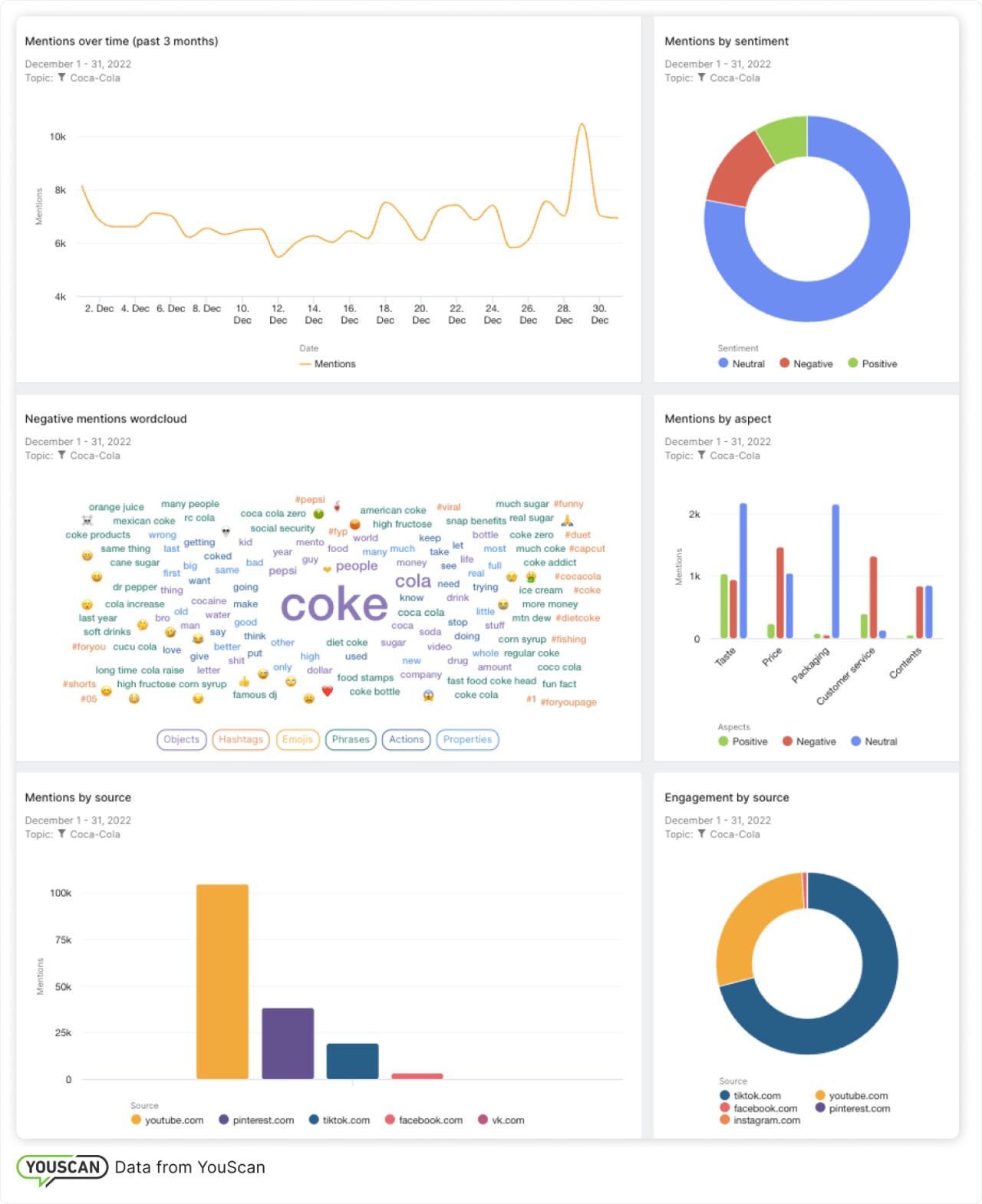

There are several important benefits from using social analytics dashboards:
metrics and widgets are customizable
data is updated in real-time
no need to create a new dashboard every time you share data
use templates based on the purpose of your monitoring
YouScan’s dashboards you can share with any stakeholder even if they don’t have access to the social listening platform
To learn more about YouScan’s data visualization capabilities, read the Ultimate guide on Custom Dashboards.
Social media analysis with YouScan
In other articles we have already analyzed the most powerful social listening tools that will help you to have a complete social media analysis that will help you to have direct access to the opinions, desires, and genuine feelings of consumers, as well as to obtain mentions of your brand or detect consumer trends.
So in this section we will focus on the strengths of the most powerful tool currently available in the market: YouScan.
YouScan
This platform is a more complex solution for brands that want to actively manage their reputation, collect actionable consumer insights, conduct research, get competitive social media analytics, collaborate with influencers, and much more.
The main strength of YouScan is the Audience Insights feature that helps you understand the demographics, interests and occupations of your customers by leveraging social media data. One more useful feature is Visual Insights which provides high-quality analytics of visual content collected from social media. With these capabilities, you can analyze scenes, objects, activities, persons and logos in the pictures collected according to your search query. With logo recognition, you can detect up to 80% more mentions than would otherwise be picked up with just text analysis alone.
Another great strength of this innovative platform is the analysis of data through ChatGPT with Insights Copilot, an assistant that will improve your network analysis experience as you will be able to obtain valuable information in a more efficient way.
Key learnings of social media analytics
Social media analytics tools allow brands to get access to unique data, including customer insights and content performance that can change the strategy of the business and uncover opportunities for growth.
There are several steps that brands should take so they benefit from social media data:
Identify key metrics for tracking such as NSR, WOM-mention, Share of Voice, etc.
Choose the right tool for social media monitoring according to the main requirements.
Set up analytics and track results on a regular basis.
YouScan gives you all the tools you need to perform a complete social network analysis in an effective and easy way.
If you want to learn more about how your company can benefit from social media listening, request a free demo to learn all its capabilities.




